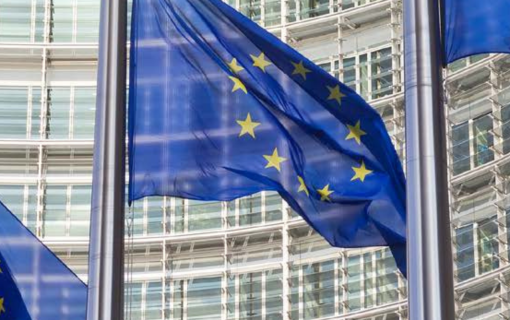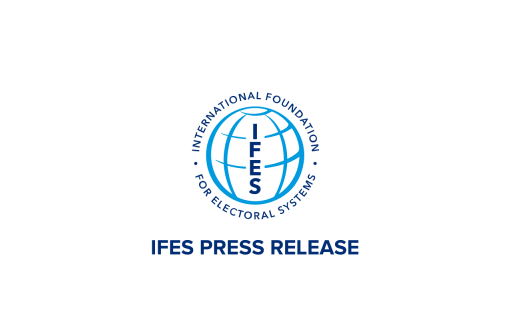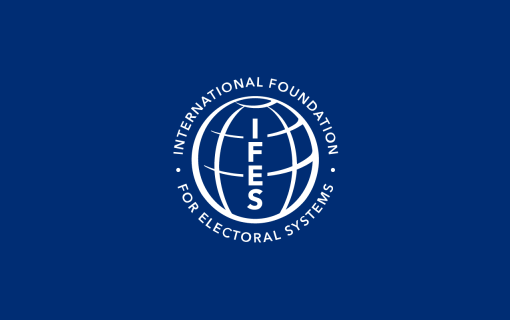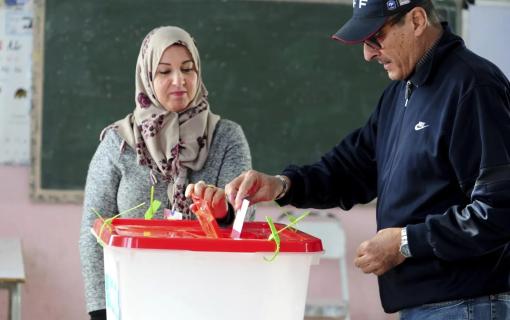Second Round of Egypt’s Presidential Elections
On June 16 and 17, Egypt held the second round of the presidential elections; this historic event allowed Egyptians to elect the first president since the fall of the Mubarak regime and marks a key milestone in the ongoing transition.
Following completion of the voting, IFES addresses questions surrounding the second round.
How did voter turnout compare to the first round?
Turnout in the second round of the presidential elections is expected to be lower than both the first round (about 46 percent) and the parliamentary elections (55 percent). While voters queued outside polling centers in the early hours of both election days, the lines were much shorter than in earlier elections. There were peaks of voters in the earlier hours of the day, which gradually decreased as the heat intensified, and increased again toward late afternoon/evening. The Supreme Presidential Elections Committee (SPEC) extended voting hours on both voting days. This measure not only helped compensate for delays in opening of some polling stations, but also helped increase the overall voter turnout.
Voting took place amid high political tensions following the Supreme Constitutional Court’s June 14 rulings that some provisions in the parliamentary elections law were unconstitutional, the People’s Assembly elections held in late 2011/early 2012 were invalid and the lower chamber of parliament, the People’s Assembly (PA), was dissolved. The court also upheld the SPEC’s decision to allow Ahmed Shafiq, the last prime minister under Hosni Mubarak, to continue his presidential candidacy. The court declared unconstitutional all the amendments made to the Political Rights Law seeking to bar certain members of the old regime from running for public office.
How was security in the second round?
Security personnel were deployed in large numbers to all polling centers and supervised voter access to the premises where polling stations were located. As on previous occasions, overall, they appeared to be well aware of their duties and assisted voters with special needs to access polling stations.
There were reports of clashes at some polling stations between supporters of the two presidential candidates, which the security personnel helped to rapidly defuse. In some reported cases, members of security forces were present within the voting area of the polling stations; Article 26 of the Political Rights Law specifies that security personnel cannot be present in the voting area unless requested by the head of the voting center committee.
Did calls for boycotting the run-off election have an impact on the second round election?
Until the official election results are announced by the SPEC, it is difficult to establish what effect the various calls for boycott ultimately had on the outcome of the elections. While some voters may have opted to boycott the run-off, others not supporting either candidate may have opted to vote, but then invalidated their ballot paper.
From a technical standpoint, how did the run-off compare to the first round?
The technical implementation of the run-off for the presidential elections mirrored the process for the first round. Polling stations had all voting materials in place in sufficient quantities, and generally, judicial supervisors and poll workers appeared to be aware of their duties. After having administered so many electoral events in the last months, election officials seemed to be well versed in their roles.
Nevertheless, some of the procedural shortfalls identified in earlier election events remained apparent. One such shortfall was unregulated access to the voting area. Despite the lower number of voters, access to the voting area still appeared problematic, with too many voters allowed within the voting area at the same time. This lack of order created procedural bottlenecks, overcrowding at the table where voters were processed and delays in smooth and timely processing. When compounded by the inadequacy of some of the voting premises, this also made it difficult for authorized observers and voters to follow the various voting steps.
Another pre-existing shortfall that continued to characterize the administration of the run-off elections was the improper application of indelible ink. Some election officials allowed voters to leave the polling premises with unmarked fingers, or with only the tip of the finger inked – not the fingernail and cuticle, as required.
Unlike the first round of elections, both second round election days were characterized by allegations of irregularities and fraud. The SPEC openly and swiftly acknowledged some of these allegations, informing the media of measures they had implemented to correct the various incidents.
Most of the polling stations across Egypt started their activities at the legally established time (8:00 a.m.). As in previous elections, however, there were reports of delays in opening of some polling stations, which prompted the SPEC to extend voting hours until 9:00 p.m. on the first day and 10:00 p.m. on the second day.
Who witnessed the election?
The same local and international groups that witnessed the first round conducted observation activities for the run-off election. In addition to local observer groups and networks, as well as candidate and party representatives, international organizations like The Carter Center, the Electoral Institute for Sustainable Democracy in Africa and the Arab Network for Monitoring of Elections deployed their observers throughout Egypt for this round of elections.
When are final results expected to be announced?
Counting of votes is expected to be completed on June 19; the SPEC is due to announce the final result by June 21. During the adjudication period between the closing of polls on June 17 and announcement of final results on June 21, candidates may appeal to the SPEC against decisions made by General Election Committees.
Which body will inaugurate the new president and when will that take place?
On June 17, the Supreme Council of the Armed Forces (SCAF) issued an addendum to the March 2011 Constitutional Declaration. The change to Article 30 requires the new president to be sworn in before the Supreme Constitutional Court. The president is expected to be inaugurated by the end of June 2012. The addendum fell short of redefining the powers of the newly-elected president; however, the SCAF retained legislative power until the election of a new People's Assembly, assumed the authority of the Minister of Defense until a new constitution is ratified and retained the right to approve the declaration of war by the president.
What are the likely next steps in Egypt's political transition?
The June 17 addendum to the March 2011 Constitutional Declaration sets out the following steps in Egypt's political transition:
- The 100-member Constituent Commission appointed by the now-dissolved parliament will be allowed to continue its work. However, if the commission fails to function, the SCAF has the authority to form a new Constituent Commission that will have three months to draft a new constitution. It has been reported that there have been resignations and legal challenges to the makeup of the Constituent Commission; therefore, it seems more likely that the new constitution will be drafted by a SCAF-appointed body.
- The draft constitution will then be put to a referendum within 15 days of its completion.
- The procedures for the electing Egypt’s next parliament will begin one month after the new constitution is approved in a referendum.
- There are expectations that the Shura Council could be dissolved very soon for the same reasons as the PA, as both chambers were elected using the same electoral system. Therefore, it is likely that the next parliamentary elections will be for both the People’s Assembly and Shura Council. Egypt's last parliamentary elections were staggered over several stages throughout Egypt (three stages for the People's Assembly elections, two stages for the Shura Council), lasting for a period of approximately three and a half months. Depending on future changes to the electoral system, a similar timeframe may be required.
Although the SCAF's addendum to the Constitutional Declaration clarifies some aspects of the remaining period of the transition, there remains a great deal of room for further intense political debate before all of Egypt's political institutions have been reformed and civilian rule is restored.









